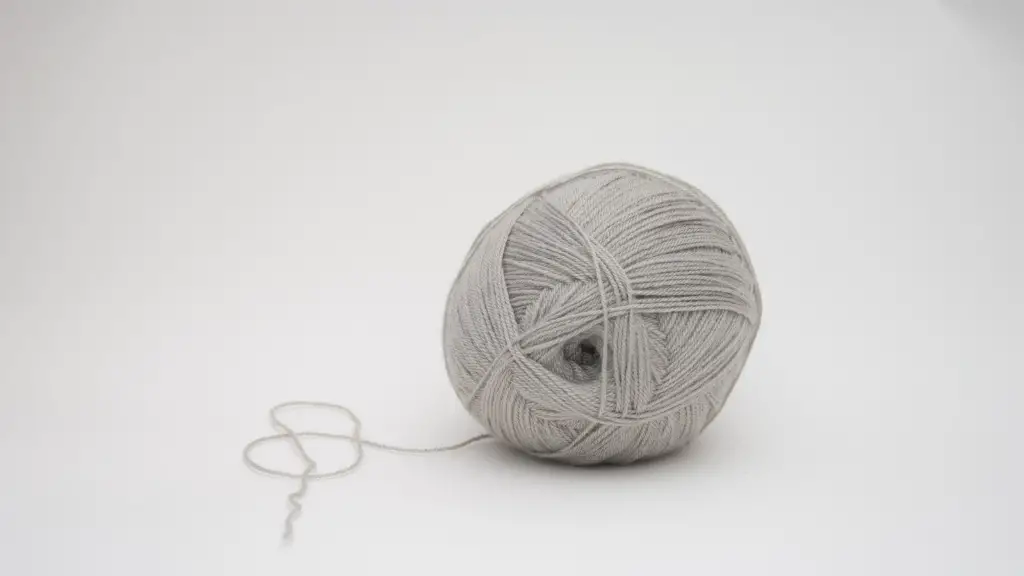Introduction
A sewing machine is a relatively complicated tool that helps people to make clothes, to mend clothes and to carry out various types of related modifications. Mini sewing machines are similar to regular sized sewing machines, with the exception that they are more compact and portable. Issues may arise when the mini sewing machine does not stitch properly, and this can be a cause of great frustration. This article attempts to provide a comprehensive guide to repairing a mini-sewing machine when it is not stitching.
Diagnosing the Problem
Before attempting any repair to a mini sewing machine, it is essential to accurately diagnose the problem. If the machine is not stitching at all, then it is likely the problem lies within the machine itself, or with the drive belt connected to the machine. If the machine is stitching properly for short sections of fabric before uncomfortable tugging occurs, this could indicate a lack of thread tension. Other potential problems may include a jam that is preventing the needle from moving, or the bobbin not feeding correctly.
Checking the Connection
One of the first steps involved in solving any sewing machine-related issue is to check the connection between the needle, bobbin and drive belt. If the connection between these components is not properly set, then the mini sewing machine will not be able to stitch correctly. To make sure that the connection is properly working, check the thread tension and ensure the machine is correctly threaded.
Thread Tension
A lack of thread tension can cause the mini-sewing machine to fail to stitch, or to stitch only small sections of cloth before having to be rethreaded. To adjust thread tension, hold the thread in one hand and then spin the tension adjustment wheel with the other. A proper tension should allow the thread to pull taught without any tension on the wheel. To test the thread tension, try stitching with a scrap piece of fabric.
Cleaning the Sewing Machine
A sewing machine should be routinely inspected to make sure that it is in good working order. This includes cleaning the bobbin, needle and the inside of the machine. A build-up of dust and dirt can cause the needle to become jammed, or can affect the function of other parts of the machine. It is generally recommended that a sewing machine is cleaned around once a month, with any more frequent cleaning required on a case-by-case basis.
Checking the Bobbin
The bobbin is one of the most important components of a mini-sewing machine. If the bobbin is not properly functioning, then this can lead to serious problems in how the machine stitches. To check the bobbin, ensure that it is full of thread, and that the threads are fed correctly through the catcher slots. If these elements are not correctly completed, no stitching will take place.
Drive Belt and Needle Maintenance
Keeping the drive belt and needle in good working order is an important part of ensuring that a mini-sewing machine functions properly. If the drive belt is worn or stretched, this can cause problems with the stitching. Additionally, make sure that the needle is the correct size, is sharp and is securely set in the machine.
Replacing Parts
Over time, the various parts of a mini-sewing machine can become old and worn. This can reduce the effectiveness of the machine, and can make stitching more difficult than it should be. In this instance, it is recommended to replace any worn parts as early as possible to avoid further problems down the line. It is worthwhile consulting the manufacturer’s instructions to ensure that the correct replacement parts are installed.
External Modifications
Sometimes, the stitching effects of a mini-sewing machine can be enhanced by certain modifications. This includes ensuring that the fabric is properly aligned, or the use of a sharp scissors to cut thicker fabrics before beginning a stitching project. Additionally, the use of a stabilizer often helps to reduce the stress placed on the machine when it is working on thicker fabrics.
Troubleshooting
As a last resort, if the mini-sewing machine has not resolved its stitching issues, then it may need to be taken to a repair shop. Professional repairs and maintenance often involve taking apart the machine and rebuilding it from the inside. Sometimes, parts may need to be replaced, and tensions adjusted. A specialist repair technician will be able to quickly solve and diagnose any issues with a mini-sewing machine.
Conclusion
Repairing a mini-sewing machine when it is not stitching doesn’t have to be complicated. Through an understanding of the various parts within the machine and basic sewing techniques, it is possible to accurately diagnose and repair the machine. Lastly, it is important to always adhere to the manufacturer’s instructions, to ensure that the machine is not damaged, and that it is kept in good working order.


